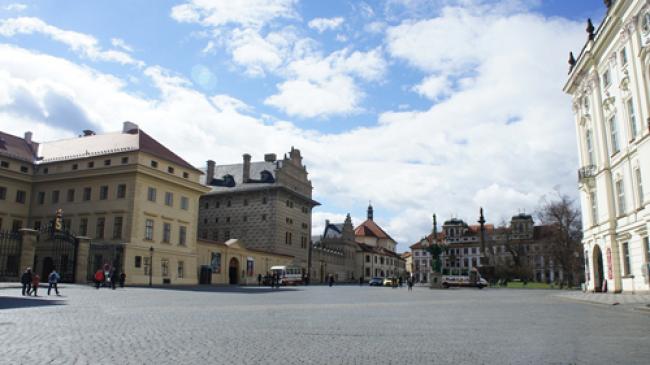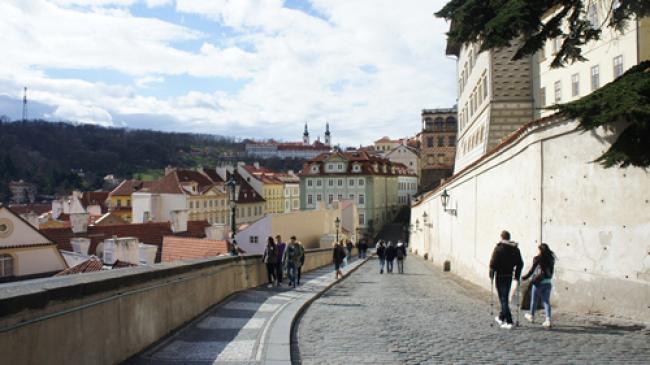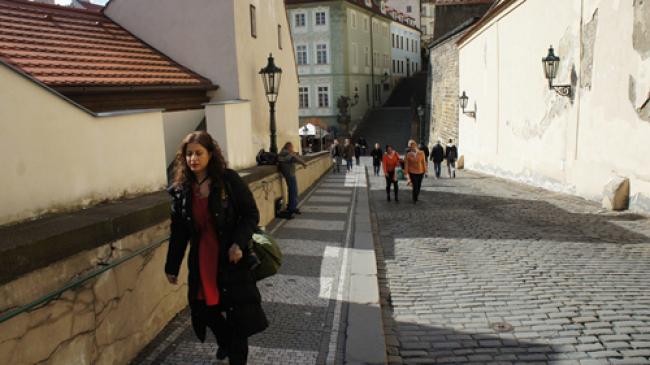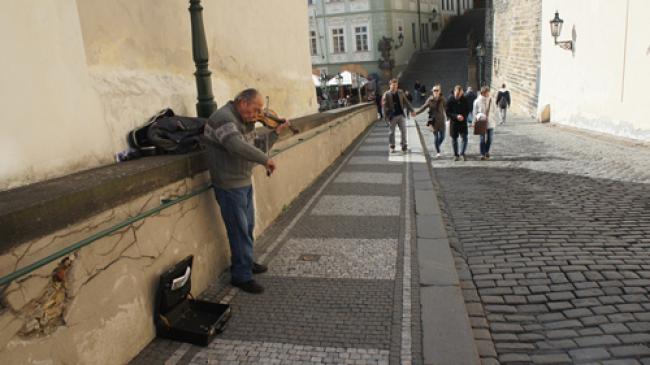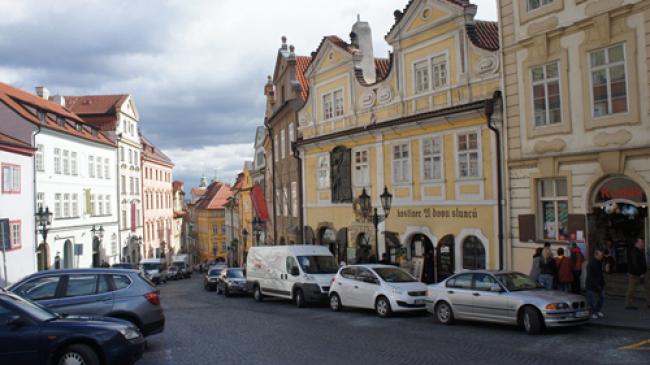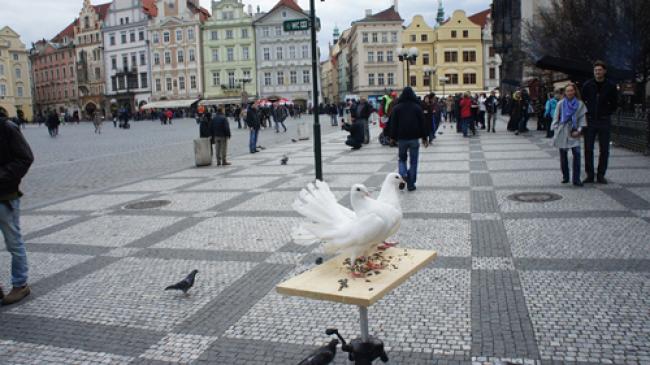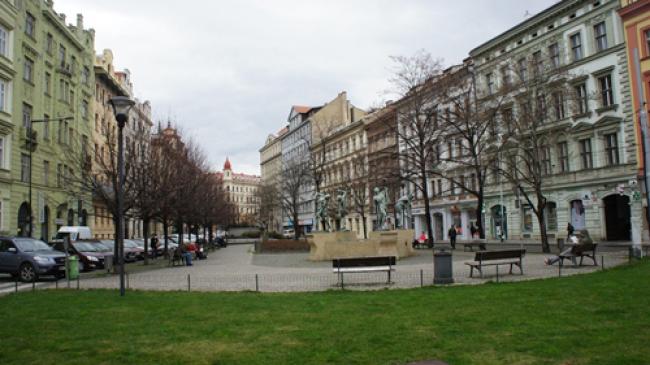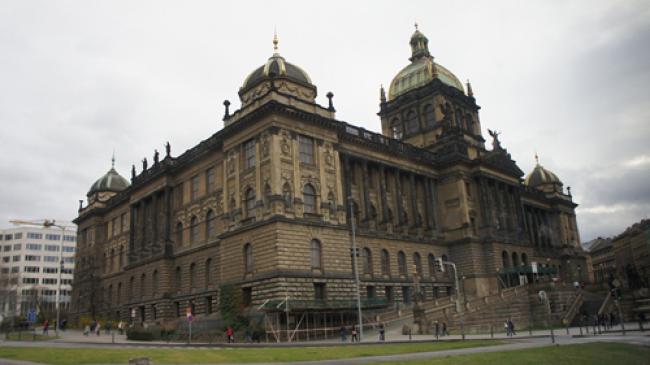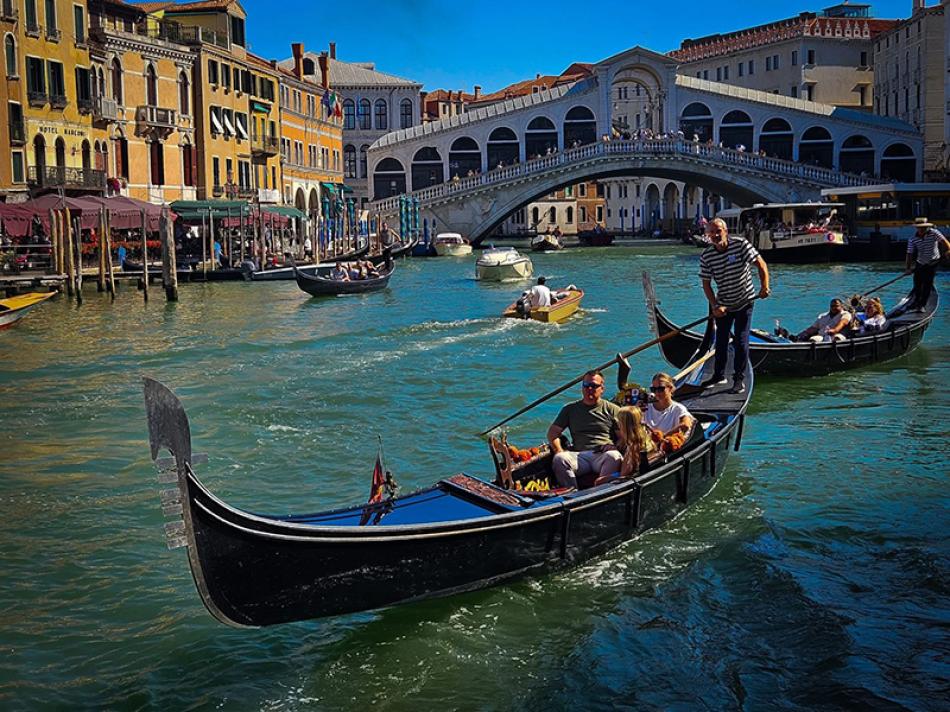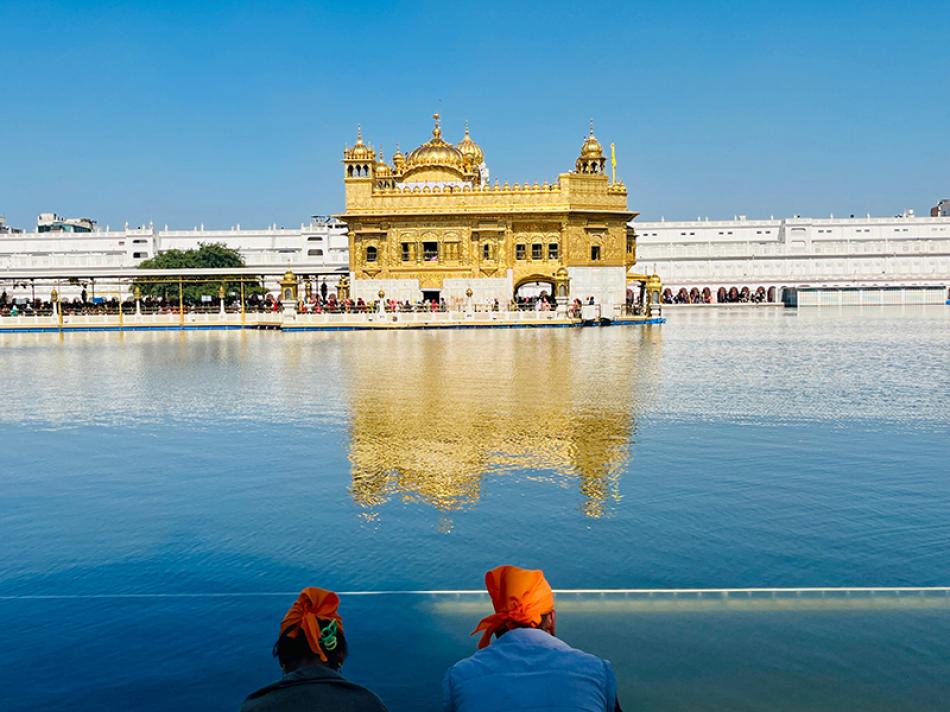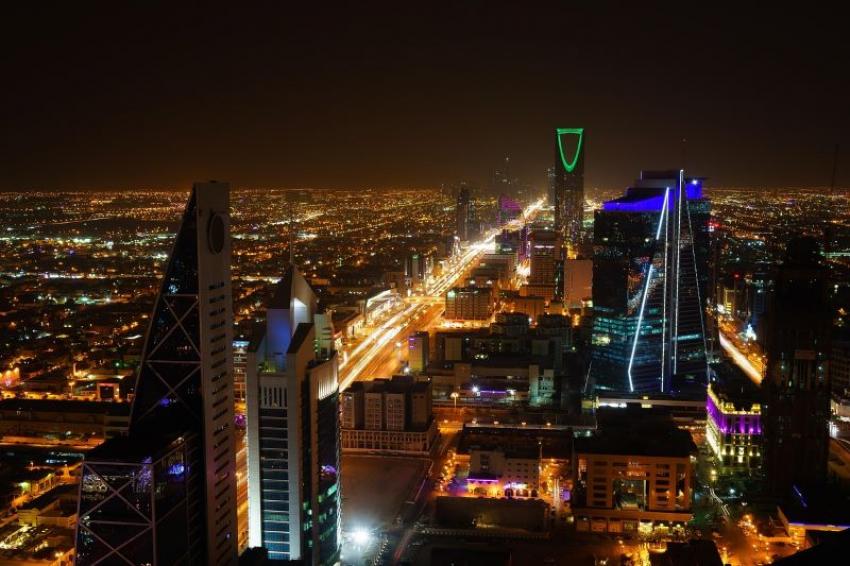Prague, the capital of the Czech Republic, was built on nine hills along the Vltava river, which flows through the city for a distance of 31 km and forms a perfect unit with the city. The dominant features of the city architecture are reflected in the river: towers, church spires and cupolas, palaces and town houses, along with the greenery of gardens, parks and islands. Among the preserved Romanesque structures in Prague, three renovated rotundas can be visited. At the time of the founding of the Old Town of Prague at the beginning of the 13th century, the Romanesque style began to be replaced with the Gothic; the oldest structure in this style is the Convent of St Agnesm of Bohemia or the Old-New Synagogue, while St Vitus Cathedral, Charles Bridge, the Church of Our Lady before Týn etc. are examples of the prime of this style. Also the trams as major public transport are a signature of the city. Images by Sujoy Dhar
Prague, the capital of the Czech Republic, was built on nine hills along the Vltava river, which flows through the city for a distance of 31 km and forms a perfect unit with the city. The dominant features of the city architecture are reflected in the river: towers, church spires and cupolas, palaces and town houses, along with the greenery of gardens, parks and islands. Among the preserved Romanesque structures in Prague, three renovated rotundas can be visited. At the time of the founding of the Old Town of Prague at the beginning of the 13th century, the Romanesque style began to be replaced with the Gothic; the oldest structure in this style is the Convent of St Agnesm of Bohemia or the Old-New Synagogue, while St Vitus Cathedral, Charles Bridge, the Church of Our Lady before Týn etc. are examples of the prime of this style. Also the trams as major public transport are a signature of the city. Images by Sujoy Dhar
Prague, the capital of the Czech Republic, was built on nine hills along the Vltava river, which flows through the city for a distance of 31 km and forms a perfect unit with the city. The dominant features of the city architecture are reflected in the river: towers, church spires and cupolas, palaces and town houses, along with the greenery of gardens, parks and islands. Among the preserved Romanesque structures in Prague, three renovated rotundas can be visited. At the time of the founding of the Old Town of Prague at the beginning of the 13th century, the Romanesque style began to be replaced with the Gothic; the oldest structure in this style is the Convent of St Agnesm of Bohemia or the Old-New Synagogue, while St Vitus Cathedral, Charles Bridge, the Church of Our Lady before Týn etc. are examples of the prime of this style. Also the trams as major public transport are a signature of the city. Images by Sujoy Dhar
Prague, the capital of the Czech Republic, was built on nine hills along the Vltava river, which flows through the city for a distance of 31 km and forms a perfect unit with the city. The dominant features of the city architecture are reflected in the river: towers, church spires and cupolas, palaces and town houses, along with the greenery of gardens, parks and islands. Among the preserved Romanesque structures in Prague, three renovated rotundas can be visited. At the time of the founding of the Old Town of Prague at the beginning of the 13th century, the Romanesque style began to be replaced with the Gothic; the oldest structure in this style is the Convent of St Agnesm of Bohemia or the Old-New Synagogue, while St Vitus Cathedral, Charles Bridge, the Church of Our Lady before Týn etc. are examples of the prime of this style. Also the trams as major public transport are a signature of the city. Images by Sujoy Dhar
Prague, the capital of the Czech Republic, was built on nine hills along the Vltava river, which flows through the city for a distance of 31 km and forms a perfect unit with the city. The dominant features of the city architecture are reflected in the river: towers, church spires and cupolas, palaces and town houses, along with the greenery of gardens, parks and islands. Among the preserved Romanesque structures in Prague, three renovated rotundas can be visited. At the time of the founding of the Old Town of Prague at the beginning of the 13th century, the Romanesque style began to be replaced with the Gothic; the oldest structure in this style is the Convent of St Agnesm of Bohemia or the Old-New Synagogue, while St Vitus Cathedral, Charles Bridge, the Church of Our Lady before Týn etc. are examples of the prime of this style. Also the trams as major public transport are a signature of the city. Images by Sujoy Dhar
Prague, the capital of the Czech Republic, was built on nine hills along the Vltava river, which flows through the city for a distance of 31 km and forms a perfect unit with the city. The dominant features of the city architecture are reflected in the river: towers, church spires and cupolas, palaces and town houses, along with the greenery of gardens, parks and islands. Among the preserved Romanesque structures in Prague, three renovated rotundas can be visited. At the time of the founding of the Old Town of Prague at the beginning of the 13th century, the Romanesque style began to be replaced with the Gothic; the oldest structure in this style is the Convent of St Agnesm of Bohemia or the Old-New Synagogue, while St Vitus Cathedral, Charles Bridge, the Church of Our Lady before Týn etc. are examples of the prime of this style. Also the trams as major public transport are a signature of the city. Images by Sujoy Dhar
Prague, the capital of the Czech Republic, was built on nine hills along the Vltava river, which flows through the city for a distance of 31 km and forms a perfect unit with the city. The dominant features of the city architecture are reflected in the river: towers, church spires and cupolas, palaces and town houses, along with the greenery of gardens, parks and islands. Among the preserved Romanesque structures in Prague, three renovated rotundas can be visited. At the time of the founding of the Old Town of Prague at the beginning of the 13th century, the Romanesque style began to be replaced with the Gothic; the oldest structure in this style is the Convent of St Agnesm of Bohemia or the Old-New Synagogue, while St Vitus Cathedral, Charles Bridge, the Church of Our Lady before Týn etc. are examples of the prime of this style. Also the trams as major public transport are a signature of the city. Images by Sujoy Dhar
Prague, the capital of the Czech Republic, was built on nine hills along the Vltava river, which flows through the city for a distance of 31 km and forms a perfect unit with the city. The dominant features of the city architecture are reflected in the river: towers, church spires and cupolas, palaces and town houses, along with the greenery of gardens, parks and islands. Among the preserved Romanesque structures in Prague, three renovated rotundas can be visited. At the time of the founding of the Old Town of Prague at the beginning of the 13th century, the Romanesque style began to be replaced with the Gothic; the oldest structure in this style is the Convent of St Agnesm of Bohemia or the Old-New Synagogue, while St Vitus Cathedral, Charles Bridge, the Church of Our Lady before Týn etc. are examples of the prime of this style. Also the trams as major public transport are a signature of the city. Images by Sujoy Dhar
Prague, the capital of the Czech Republic, was built on nine hills along the Vltava river, which flows through the city for a distance of 31 km and forms a perfect unit with the city. The dominant features of the city architecture are reflected in the river: towers, church spires and cupolas, palaces and town houses, along with the greenery of gardens, parks and islands. Among the preserved Romanesque structures in Prague, three renovated rotundas can be visited. At the time of the founding of the Old Town of Prague at the beginning of the 13th century, the Romanesque style began to be replaced with the Gothic; the oldest structure in this style is the Convent of St Agnesm of Bohemia or the Old-New Synagogue, while St Vitus Cathedral, Charles Bridge, the Church of Our Lady before Týn etc. are examples of the prime of this style. Also the trams as major public transport are a signature of the city. Images by Sujoy Dhar
Prague, the capital of the Czech Republic, was built on nine hills along the Vltava river, which flows through the city for a distance of 31 km and forms a perfect unit with the city. The dominant features of the city architecture are reflected in the river: towers, church spires and cupolas, palaces and town houses, along with the greenery of gardens, parks and islands. Among the preserved Romanesque structures in Prague, three renovated rotundas can be visited. At the time of the founding of the Old Town of Prague at the beginning of the 13th century, the Romanesque style began to be replaced with the Gothic; the oldest structure in this style is the Convent of St Agnesm of Bohemia or the Old-New Synagogue, while St Vitus Cathedral, Charles Bridge, the Church of Our Lady before Týn etc. are examples of the prime of this style. Also the trams as major public transport are a signature of the city. Images by Sujoy Dhar
